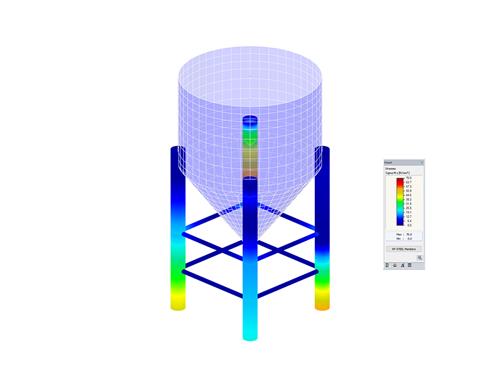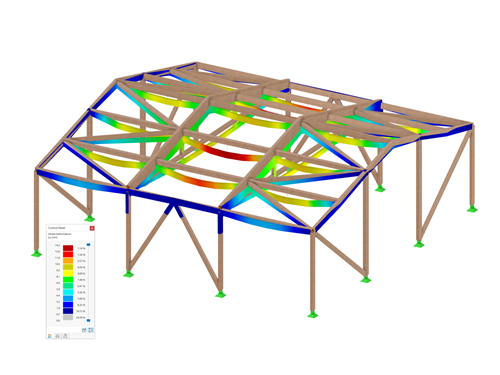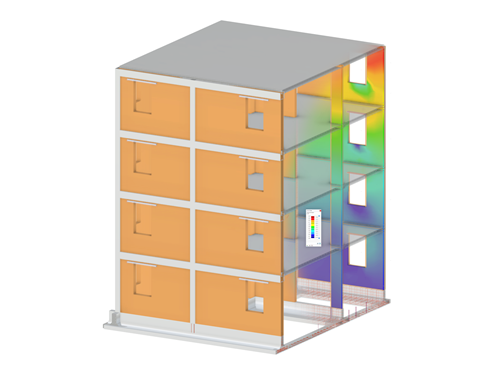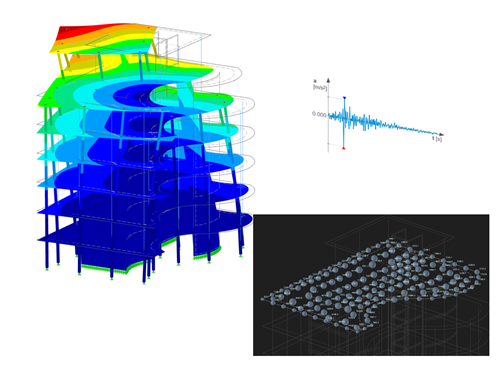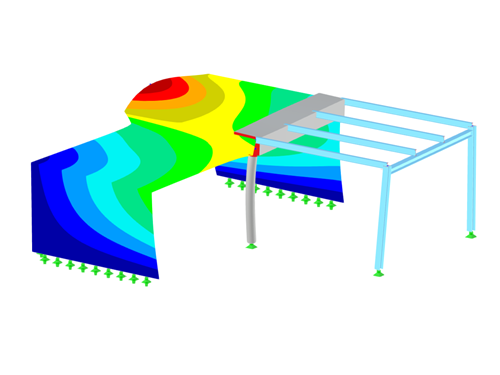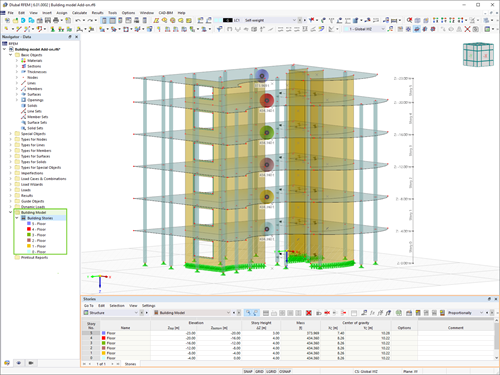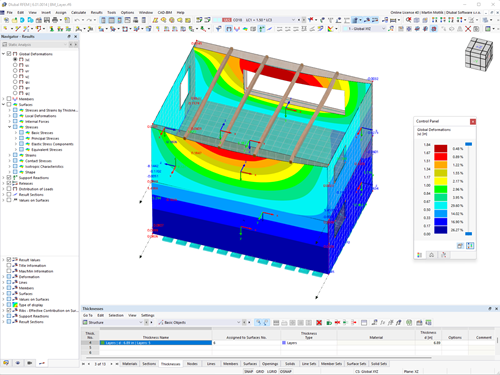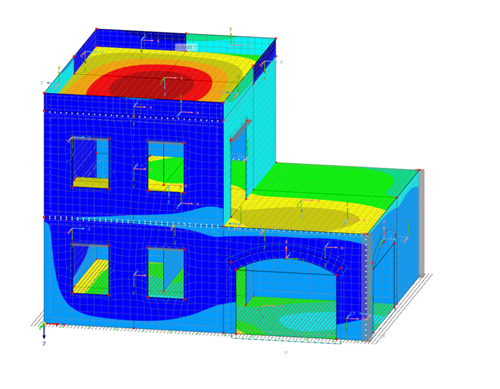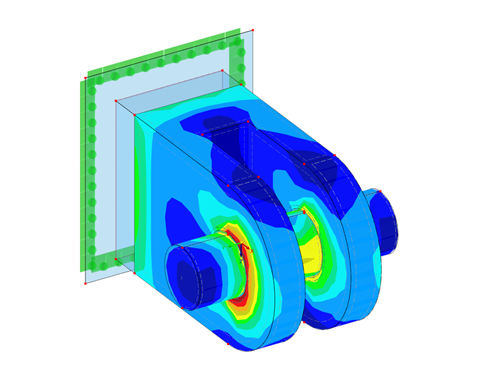The Stress-Strain Analysis add-on performs a general stress analysis by calculating the existing stresses and comparing them with the limit stresses. RFEM also determines the stress ranges. Furthermore, it is possible to determine strains for surfaces and solids.
During the stress analysis, the maximum stresses of solids, surfaces, and line welds (RFEM only), as well as of members are determined. The governing internal forces are also documented for each member and surface. Furthermore, there is the option of an automatic section or thickness optimization including the update of the sections or surface thicknesses modified in RFEM/RSTAB.
This manual describes the Stress-Strain Analysis add-on for the programs RFEM 6 and RSTAB 9.
The Timber Design add-on allows you to design timber members and surfaces according to various design standards. Cross-section resistance checks, stability analyses, and serviceability limit state design checks can also be performed. The input and result evaluation are completely integrated in the user interface of the structural FEA software RFEM and the frame & truss analysis software RSTAB.
This manual describes the Timber Design add-on for the RFEM 6 and RSTAB 9 programs.
The Masonry Design add-on activates special material models that have been developed for calculating masonry structures. This allows you to consider the masonry material in an FEM analysis.
In the calculation, internal forces and deformations are determined on the basis of stress-strain lines derived from the standardization. This means that the design is based on the standard.
This manual describes the Masonry Design add-on for the RFEM 6 program.
The Aluminum Design add-on allows you to design aluminum members according to various design standards. It is possible to perform cross-section resistance checks, stability analyses, and serviceability limit state design checks. The input and result evaluation are completely integrated in the user interface of the structural FEA software RFEM and the frame & truss analysis software RSTAB.
This manual describes the Aluminum Design add-on for the RFEM 6 and RSTAB 9 programs.
Dynamic analyses in RFEM 6 and RSTAB 9 can be performed in several add-ons.
- The Modal Analysis add-on is the basic add-on, performing natural vibration analyses for member, surface, and solid models. It is a prerequisite for all other dynamic add-ons.
- The Response Spectrum Analysis add-on allows you to perform a seismic analysis using the multi-modal response spectrum analysis.
- The Time History Analysis add-on allows for a dynamic structural analysis of external excitations that can be defined as a function of time.
- The Pushover Analysis add-on allows you to determine the maximum nonlinear response of a structure to seismic loads.
- The Harmonic Response Analysis add-on is still under development.
This manual describes the dynamic analysis add-ons for RFEM 6 and RSTAB 9.
In this tutorial, we would like to inform you about the essential features of the RFEM program. In the first part, a model was defined and a structural analysis carried out. Then the concrete and steel designs were performed out in the following parts. This part now guides you through the dynamic analysis of the model according to EN 1998-1 with the CEN settings.
In this tutorial, we would like to inform you about the essential features of the RFEM program. In the first part, a model was defined and a structural analysis carried out. Then the concrete and steel designs were performed out in the following parts. This part now guides you through the dynamic analysis of the model according to ASCE 7.
The Building Model add-on allows you to define and manipulate a building by means of stories. The stories can be adjusted in many ways. Information about the stories and also the entire model (a center of gravity) is displayed in tables and graphics.
This manual describes the Building Model add-on for the RFEM 6 program.
The Multilayer Surfaces add-on allows you to define the layer structure of any material model. Another possible thickness type is the beam panel as a composite of members and surfaces. In the case of orthotropic materials, the individual layers can be rotated by an angle β, and thus it is possible to consider different stiffnesses by direction. The Multilayer Surfaces add-on is completely integrated in the user interface of the FEA program RFEM.
This manual describes the Multilayer Surfaces add-on for the RFEM 6 program.
This manual describes the topics of the webinar "Masonry Design of Using Finite Element Method in RFEM 6".
This webinar shows you how to model masonry structures in RFEM 6 and how to calculate them using the nonlinear orthotropic material model.
This manual describes the topics of the webinar "Modeling and Design of Solid Elements in RFEM 6".
In the webinar, a splice with bolts is modeled. It explains how you can define the contact between solids and perform a stress-strain analysis. Furthermore, the utilization of welds is also considered.
